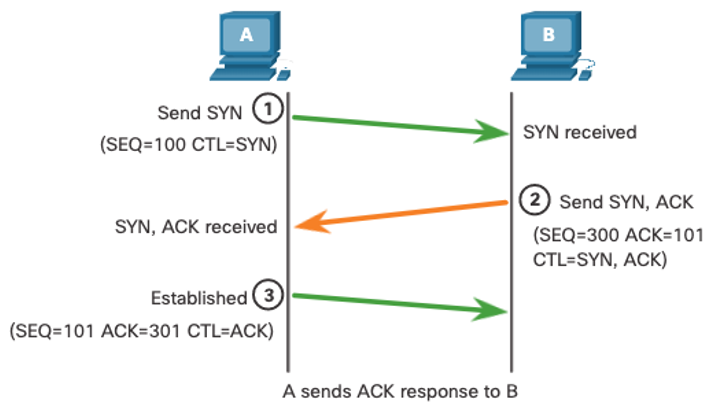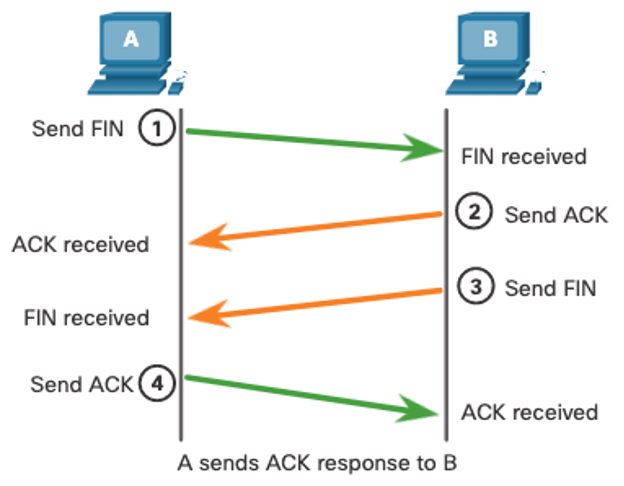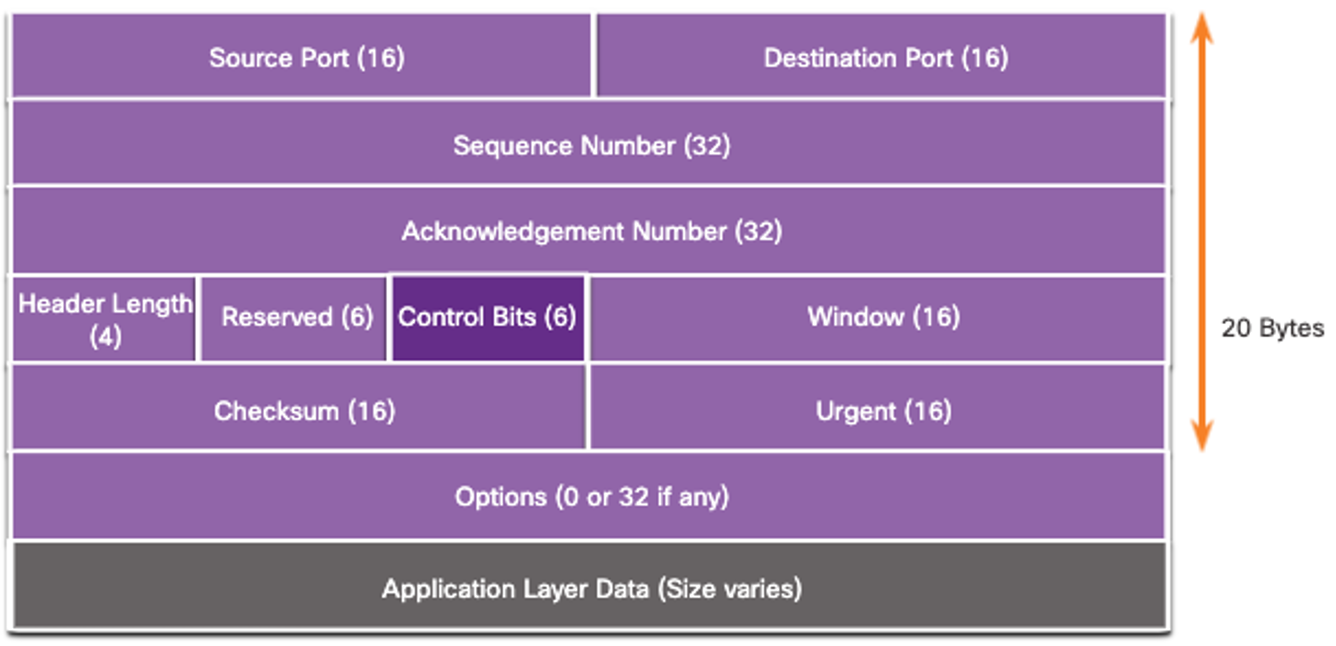
About Lesson
TCP Communication Process
Explain how TCP session establishment and termination processes facilitate reliable communication.
TCP Connection Establishment
- Step 1: The initiating client requests a client-to-server communication session with the server.
- Step 2: The server acknowledges the client-to-server communication session and requests a server-to-client communication session.
- Step 3: The initiating client acknowledges the server-to-client communication session.

Session Termination
- Step 1: When the client has no more data to send in the stream, it sends a segment with the FIN flag set.
- Step 2: The server sends an ACK to acknowledge the receipt of the FIN to terminate the session from client to server.
- Step 3: The server sends a FIN to the client to terminate the server-to-client session.
- Step 4: The client responds with an ACK to acknowledge the FIN from the server.

TCP Three-Way Handshake Analysis
- Functions of the Three-Way Handshake:
-
- It establishes that the destination device is present on the network.
- It verifies that the destination device has an active service and is accepting requests on the destination port number that the initiating client intends to use.
- It informs the destination device that the source client intends to establish a communication session on that port number.
- After the communication is completed the sessions are closed, and the connection is terminated.
- The connection and session mechanisms enable TCP reliability function.
- The six control bit flags are as follows:
-
- URG – Urgent pointer field significant
- ACK – Acknowledgment flag used in connection establishment and session termination
- PSH – Push function
- RST – Reset the connection when an error or timeout occurs
- SYN – Synchronize sequence numbers used in connection establishment
- FIN – No more data from sender and used in session termination

Other related topics
| Topic Title | Topic Objective |
|---|---|
| Transportation of Data | Explain the purpose of the transport layer in managing the transportation of data in end-to-end communication. |
| TCP Overview | Explain characteristics of TCP. |
| UDP Overview | Explain characteristics of UDP. |
| Port Numbers | Explain how TCP and UDP use port numbers. |
| TCP Communication Process | Explain how TCP session establishment and termination processes facilitate reliable communication. |
| Reliability and Flow Control | Explain how TCP protocol data units are transmitted and acknowledged to guarantee delivery. |
| UDP Communication | Compare the operations of transport layer protocols in supporting end-to-end communication. |
Other useful information
Join the conversation